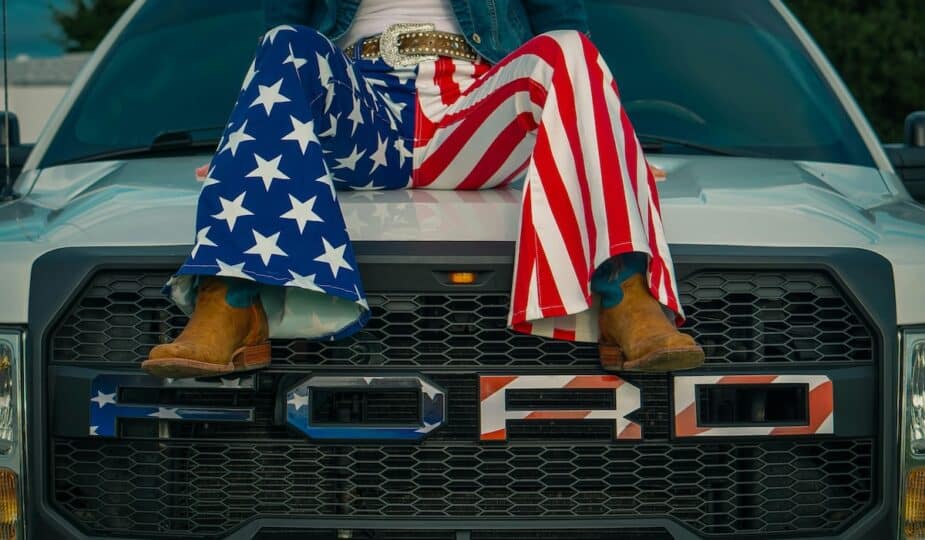While wearing the American flag is technically against the U.S. Flag Code, this hasn’t stopped it from becoming a nationwide fashion symbol. From retail stores to runways, the American Stars and Stripes symbol has become a persistent trend in patriotic fashion. Let's go on a journey through the evolution of patriotic fashion, exploring how the Stars and Stripes have become a powerful emblem of American identity.
Early Symbols of Patriotism
In early American history, patriotic clothing was not commonplace. The first versions of the flag, like the Betsy Ross flag, were mostly used in military clothing or ceremonial outfits but rarely seen outside elsewhere.
Thanks to developments in printing technology after the Civil War, the flag became a more widely used symbol on goods and advertisements, but it still hadn’t made its mark in fashion. The real shift happened in the 1950s.
The 1950s Boom
The two World Wars brought a surge in patriotic fashion. During World War I and II, women started pinning ribbons of red, white, and blue in their hair to show support for their enlisted husbands.
However, it wasn’t until the 1950s that wearing the flag really took off.
For the first time, wearing the American flag started to mean something other than pure patriotism. Activists protesting US involvement in the Vietnam and Korean Wars wore flag shirts to rallies. As the wars and protests intensified into the '60s and '70s, the upside-down American flag became a common feature of protestors’ clothing.
Cultural and Political Movements
The mid-20th century was a time of significant social change, and patriotic fashion evolved alongside cultural and political movements. During the Civil Rights era, patriotic clothing took on new meanings as Americans sought to express their hopes for equality and justice.
US flag clothing still has the power to create a stir today, especially in relation to political and social movements. Big names like A$AP Rocky and Nike have gotten into hot water over their potentially insensitive use of the flag in clothing and shoes. With growing political polarization, there’s a fine line between how the flag is interpreted and whether it’s seen as patriotism or nationalism.
Pop culture also played a crucial role, with celebrities and media amplifying patriotic themes in fashion, from Rock 'n' Roll legend Frank Zappa’s Uncle Sam hat portrait in 1979 to Bon Jovi wearing a Stars and Stripes cape on stage a decade later.
Patriotism in Fashion Now
Fast forward to today, and US patriotic clothing shows no signs of disappearing; just look at Katy Perry’s bedazzled July 4th bikini. Wearing the American flag continues to be a symbol of national pride, especially around Independence Day celebrations.
On the other hand, it’s become so normalized that many people unintentionally don the flag without attaching much meaning to it at all. For example, you can find the flag in wardrobes around the world thanks to the globalization of ‘all-American’ designers like Tommy Hilfiger and Ralph Lauren.
Understanding the Evolution of Patriotic Fashion
The evolution of patriotic fashion reflects the nation’s changing identity and values, helping us appreciate its role in our culture. So, next time you wear a flag-themed outfit, remember the rich history it represents, and wear it mindfully and with pride!


